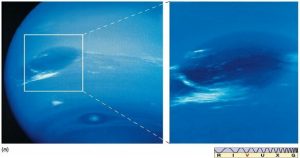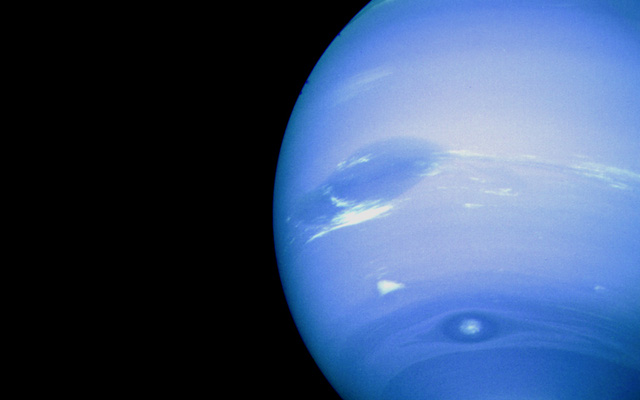
New Storm On Neptune Makes Earth-Sized Appearance
Science has no limits, nor is space. Following the intrusive discoveries on the possibilities of survival on Saturn’s moon ‘Titan’, scientists are now keenly looking into the features of Neptune.
Researchers observed a gigantic storm system about the size of Earth near Neptune’s equator, a region where no bright cloud has ever been seen before. This massive storm system is about 9,000 kilometers in length, or one-third the size of Neptune’s radius, spanning at least 30 degrees in both latitude and longitude.
United States’ University of California professor Ned Molter observed the storm getting much brighter between June 26 and July 2. He spotted the storm near Neptune’s equator during a dawn test run of twilight observing at W M Keck Observatory on Maunakea, Hawaii.

“Seeing a storm this bright at such a low latitude is extremely surprising, normally, this area is really quiet and we only see bright clouds in the mid-latitude bands, so to have such an enormous cloud sitting right at the equator is spectacular,” said Molter.
Meanwhile, Imke de Pater, a professor at UC Berkeley has added, “Historically, very bright clouds have occasionally been seen on Neptune, but usually at latitudes closer to the poles, around 15 to 60 degrees north or south, never before has a cloud been seen at or so close to the equator, nor has one ever been this bright.”
Just before identifying that the measurements of its locale do not match, signaling that this cloud complex is different from the one Hubble first saw more than two decades ago, de Pater thought it was the same Northern Cloud Complex seen by the Hubble Space Telescope in 1994.
It is believed that the huge, high-pressure, dark vortex system anchored deep in Neptune’s atmosphere may be what is causing the colossal cloud cover, as gases rise up in a vortex, they cool down. When its temperature drops below the condensation temperature of a condensable gas, that gas condenses out and forms clouds, just like water on Earth. On Neptune, however, methane clouds form.

Researchers further claimed that the winds in Neptune’s atmosphere vary drastically with latitude, so if there is a big bright cloud system that spans many latitudes, something must hold it together, such as a dark vortex. Otherwise, the clouds would shear apart they added.
Pater then stated: “This big vortex is sitting in a region where the air, overall, is subsiding rather than rising. A long-lasting vortex right at the equator would be hard to explain physically.”
Meanwhile, if it is not tied to a vortex, the system may be a huge convective cloud, similar to those seen occasionally on other planets, like the huge storm on Saturn that was detected in 2010, such a cloud would be expected to smear out considerably over a week’s time, added the researchers.
“This shows that there are extremely drastic changes in the dynamics of Neptune’s atmosphere, and perhaps this is a seasonal weather event that may happen every few decades or so,” concluded Pater.
Related Article: Is History Repeating Itself? NASA Discovers ‘Impossible’ Ice Cloud On Titan Again!